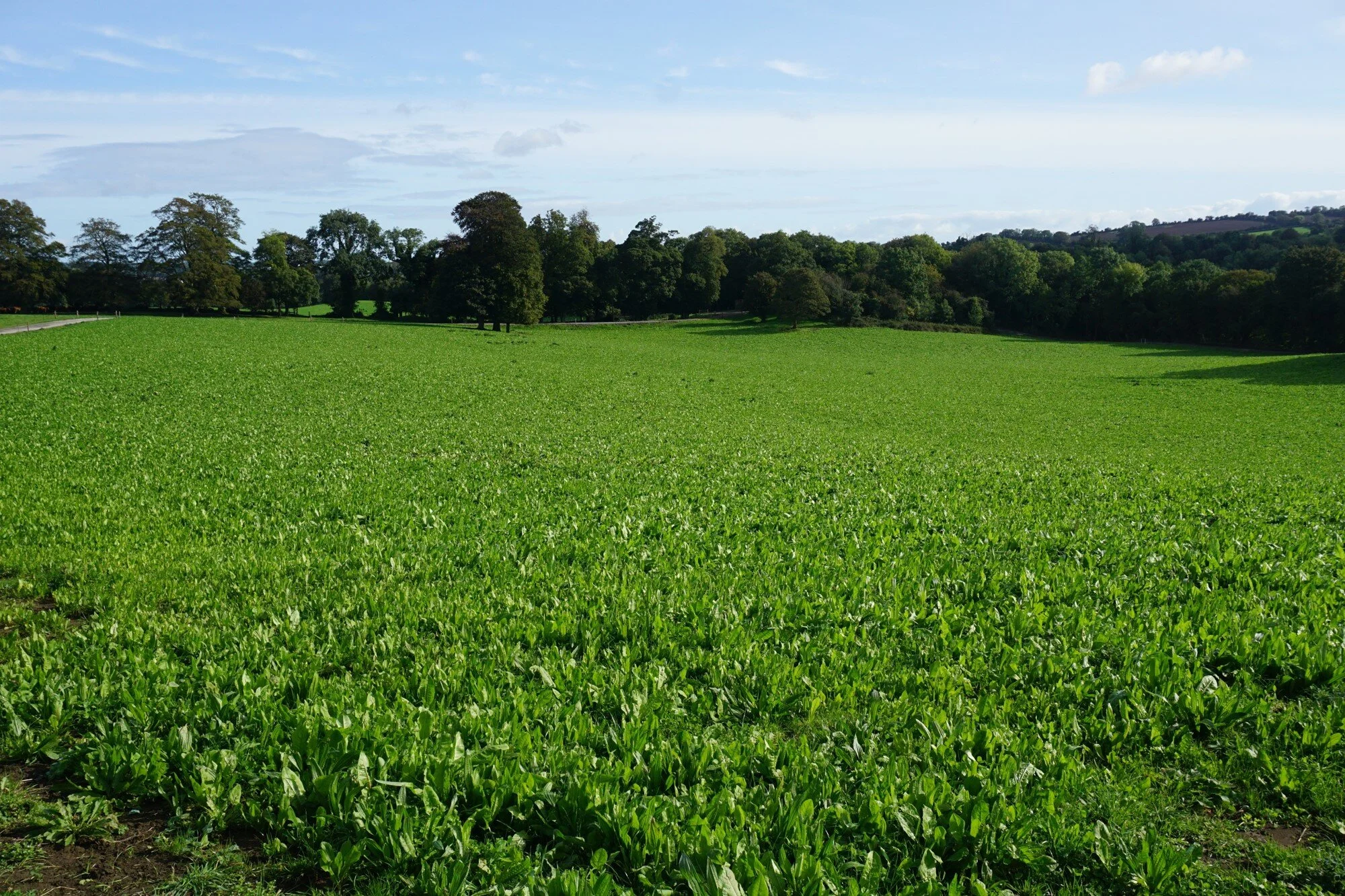The impact of sward composition and management on the productivity of herbage under co-grazing of sheep and cattle.
Introduction
In Ireland, approximately 84% of agricultural land is under grassland. Over recent decades grazing systems have traditionally been based on perennial ryegrass (Lolium perenne; PRG) which make up 95% of annual grass seed sales (DAFM, 2020). PRG swards are reliant on nitrogen (N) fertilisers, the production and applications of which is energy intensive and has negative environmental impacts.
Increasing species diversity within a sward has been shown to better utilize available resources due to species niche complementarity.
This can generate “overyielding,” where the total biomass of a mixture of species exceeds the monoculture biomass achieved by the highest yielding of the component species. Multispecies swards consisting of grass, legume and herb have been shown to produce equitable dry matter (DM) yields from reduced N inputs compared to grass only swards (Grace et al., 2019).
However, little information currently exists regarding appropriate management for multispecies swards under co-grazing systems.
Here we investigate the DM yield and growth patterns of four sward types, managed under a cattle and sheep co-grazing system.
Methods
A complete randomized block design was used to investigate the effect of increasing pasture species on herbage production in a co-grazing experiment with sheep and cattle. Four experimental farmlets were established in July 2019: PRG only, receiving 170 kg N ha-1, a preexisting permanent pasture receiving 135 kg N ha-1 (PP), a six species sward containing two grasses, two legumes and two herbs (6S) and a twelve species sward containing three grasses, four legumes and five herbs (12S) both receiving 70 kg N ha-1.
Each farmlet was stocked at 2 LU ha-1 and were rotationally grazed. Target pre grazing herbage mass (above 4cm) was 1500 kg DM yield (DM) ha-1 for the PRG and PP swards. Target pre grazing herbage mass (above 6 cm) was 2500 kg DM ha-1 for the 6S and 12S swards. Target post grazing sward height was 4 cm for the PRG and PP swards and 6 cm for the 6S and 12S swards. Herbage samples were collected before and after each grazing to determine DM yield. Weekly herbage measurement was conducted to determine daily herbage growth rates (kg DM ha-1 day-1.

Results
Figure 1. The effect of sward type on DM production
(kg DM/ha) from January to September 2020 (data is
expressed by means ± standard error).
Mean DM production from the 6S and 12S swards shown in Fig.1 were similar (11.4 and 11.9 t DM ha−1 respectively). The PRG sward produced 8.8 t DM ha−1 while the PP sward produced 6.4 t DM ha−1.
Figure 2. The effect of sward type on daily herbage growth (kg DM ha1 day1 )from January to September 2020 (data is expressed by means).
Fig 2. shows the daily herbage growth rates on the four sward types. The shaded area reflects a period of below average rainfall.
Dry matter production from multispecies swards is greater than PRG and PP swards despite reduced N rates. Herbage daily growth rates from multispecies swards outperform PRG and PP swards in periods of below average rainfall.
ONGOING WORK
• Investigate the impact of animal grazing on the persistence of sward species.
• Assess the nutritional quality of herbage from the four sward types.
• Investigate earthworm populations & infiltration rates under each sward type.
• Assess the impact of fertiliser & establishment methods on the swards.
Ongoing Work
Investigate the impact of animal grazing on the persistence of sward species.
Assess the nutritional quality of herbage from the four sward types.
Investigate earthworm populations & infiltration rates under each sward type.
Assess the impact of fertiliser & establishment methods on the swards.
References
Department of Agriculture, Food and the Marine (DAFM) 2020
Grass and white clover recommended list varieties for Ireland 2020
Grace, C., Boland, T., Sheridan, H., Brennen, E., Frittch, R., Lynch, B., (2019) The effect of grazing versus cutting on dry matter production of multispecies and perennial ryegrass only swards. Grass Forage Science 00 , pp. 1-13




